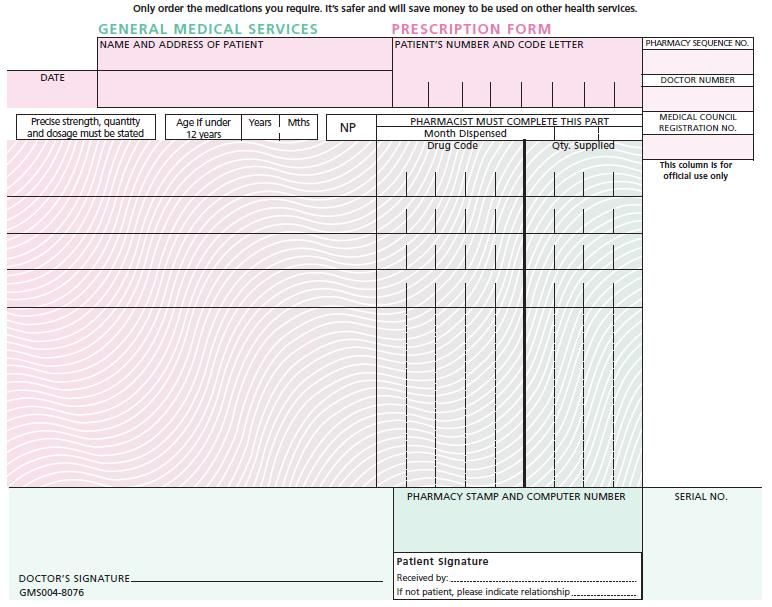Primary care reimbursement is currently at the forefront of healthcare innovation, especially as experts shine a light on the alarming primary care crisis in the United States. As demand for medical appointments soars and the number of available primary care physicians dwindles, innovative funding models such as the ACO PC Flex are being implemented to boost primary care spending. This prospective payment program incentivizes doctors to redirect funds toward preventive care, aiming to mitigate serious health issues before they necessitate costly hospitalizations. By focusing on accountable care organizations, or ACOs, the initiative promises to foster a healthier healthcare ecosystem with improved access and comprehensive patient care. Ultimately, reforming primary care reimbursement is essential for reshaping the future of American healthcare, turning the tide towards a more sustainable model that values primary care as much as specialty services.
Reforming how we compensate primary healthcare providers is crucial for enhancing patient access and care quality. With a growing recognition of the pressing issues surrounding primary care funding, new strategies like the ACO PC Flex program are stepping in to address these shortcomings. This initiative represents a shift towards more sustainable financing, allowing clinicians to focus on preventive measures rather than merely treating acute conditions. Emphasizing shared savings and upfront payments, this innovative approach within accountable care organizations aims to create a healthier future for patients. As healthcare professionals explore alternative reimbursement models, the hope is to elevate primary care to the level of value it truly deserves in the healthcare landscape.
The Primary Care Crisis: An Urgent Need for Reform
The U.S. primary care system is currently facing a crisis characterized by increasing demand for healthcare services coupled with a serious shortage of available physicians. This imbalance has significant implications for patient care, particularly as many individuals require timely access to primary care providers for preventative services and chronic disease management. Medical professionals are finding themselves overwhelmed, with pressures to see a high volume of patients in short periods becoming increasingly detrimental to the overall quality of care. This situation is exacerbated by the financial landscape of healthcare, where primary care practices often struggle to secure sufficient reimbursement compared to specialist services.
In response to these systemic issues, initiatives like ACO PC Flex and others are emerging as potential solutions aimed at alleviating some of the burdens on primary care. These innovative healthcare models seek to align financial incentives with the needs of the patient population. They focus on enhancing primary care infrastructure to support better patient outcomes, which could ultimately lead to decreased hospitalizations and lower overall healthcare costs. Addressing the ongoing primary care crisis is essential in leading the U.S. toward a more sustainable and efficient healthcare system.
Innovative Payment Models: Harnessing Prospective Payment Solutions
One promising avenue emerging from healthcare reforms is the concept of ‘prospective payment’ systems, particularly as seen in the ACO PC Flex initiative. Unlike traditional models where payment occurs after services are rendered, prospective payment emphasizes providing physicians with upfront funding based on their patient populations. This fosters a proactive approach to healthcare delivery, enabling providers to focus on preventative care rather than merely reacting to illnesses as they arise. Such a shift is imperative in combating the escalating costs of care in environments where chronic diseases prevail and hospital admissions are frequent.
The enhancement of primary care reimbursement through these progressive payment models signals a significant change in the relationship between providers and the healthcare system. By ensuring primary care practitioners receive a greater share of the healthcare budget, this system aims to create financial stability, encourage investment in patient education, and promote services designed to prevent serious medical conditions. As successful trials continue to unfold, the hope is that these models will contribute substantially to the ongoing discussions about how primary care can evolve to meet both provider and patient needs effectively.
Accountable Care Organizations: A New Paradigm for Primary Care
Accountable Care Organizations (ACOs) represent a transformative approach to the monetary dynamics of primary care service provision. Designed to incentivize high-quality care at lower costs, these organizations operate by rewarding healthcare providers for maintaining the health of their patient populations rather than simply for the volume of services delivered. The shared savings model, wherein remaining budgeted funds after care expenses are distributed to healthcare providers, encourages doctors to prioritize preventative measures and reduce unnecessary hospital visits. This innovative structure enhances the collaboration between providers and fosters a more sustainable healthcare environment.
With the recent introduction of ACO PC Flex, the aim is to amplify these principles by ensuring that primary care providers receive their funding upfront. This progressive adjustment not only allows practices to enhance their services but also lessens the constraints caused by traditional fee-for-service models. By incentivizing doctors to extend their care efforts beyond routine clinical visits, ACOs are potentially paving the way for a much-needed renaissance in primary care, reinforcing the idea that providing preventive care is more beneficial than reactive treatments while addressing the root causes of the primary care crisis.
Overcoming Barriers in Primary Care: Strategies for Improvement
Despite the potential advantages of innovative models like ACO PC Flex, significant barriers remain in enhancing the primary care landscape. One of the major obstacles is the entrenched value system within the healthcare industry that tends to favor specialized medical fields over general primary care. This inequity often translates to inadequate financial support for primary care practices and discourages medical students from pursuing careers in this essential field. Overhauling the payment structure will require substantial advocacy and political effort to balance the distribution of resources across medical specialties.
Additionally, the overwhelming volume of medical information and complexity of patient cases present further challenges for primary care providers. As the field of medicine continues to advance at a rapid pace, practitioners must stay informed about new developments and integrate them into their practices effectively. Strategies such as integrating technology and health informatics can assist providers in managing information overload, thus enabling them to focus more on patient interaction and less on administrative burdens. Investments in training and resources that enhance efficiency and patient engagement are crucial for the successful implementation of promising models aimed at revitalizing primary care.
The Role of Technology in Evolving Primary Care Practices
The integration of technology into primary care is pivotal in addressing the challenges faced by healthcare providers. Innovations such as telehealth, electronic health records (EHRs), and mobile health applications are reshaping how patient-practitioner interactions occur, making healthcare more accessible and efficient. Telehealth, for instance, offers a viable solution to the primary care shortage by allowing patients to communicate with providers without the constraints of location or transportation. This flexibility can lead to enhanced patient engagement and better management of chronic conditions.
Furthermore, the utilization of EHRs can streamline clinical workflow, ensuring that practitioners have immediate access to essential patient data, which can improve diagnosis and treatment decisions. As these technologies continue to evolve, the potential for data analytics to inform patient care strategies increases, allowing for the targeted delivery of services to high-risk populations. By adopting and adapting to these technological advancements, primary care providers can enhance their capabilities, improve patient outcomes, and ultimately thrive in an increasingly complex healthcare environment.
The Future of Primary Care: Exploring Financial Sustainability
Ensuring financial sustainability within primary care practices remains a key concern as the healthcare landscape transforms. The introduction of models like ACO PC Flex is a significant first step in increasing the available funding for primary care. However, for such innovations to have lasting effects, ongoing support and commitment from both providers and legislators will be crucial. Exploring ways to secure consistent funding streams, reduce administrative burdens, and enhance provider compensation is vital for ensuring that the primary care sector can not only survive but flourish.
Moreover, expanding the conversation surrounding primary care reimbursement into the realm of commercial insurance is necessary for a comprehensive reform. With ACOs demonstrating success in public programs like Medicare, there is notable potential for private insurers to adopt similar models. Collaborations between government, insurance providers, and healthcare organizations will facilitate the alignment of priorities, ensuring that preventative care is prioritized, and the financial challenges facing primary care are systematically addressed.
The Impact of Policy on Primary Care Reimbursement
Federal and state policies play a critical role in shaping the financial landscape of primary care. Efforts to reform healthcare legislation, especially those that reinforce the necessity of primary care services, can lead to better compensation and support for practitioners. Policy initiatives that promote value-based care over volume-driven models will allow primary care providers to dedicate more attention and resources to preventive health measures, which can ultimately reduce healthcare costs across the system.
Policy-makers must also consider the specific needs of primary care practitioners when drafting laws and regulations. Establishing a balanced framework that prioritizes both accessible care for patients and fair compensation for providers is the key to creating a sustainable primary care environment. Engaging healthcare providers in discussions about policy changes will ensure that first-hand experiences and insights are considered, leading to more effective and targeted legislative action.
Community Health and Primary Care: Building Stronger Networks
Community health initiatives are vital to strengthening the ties between primary care providers and the populations they serve. By fostering relationships with local organizations, health departments, and social services, primary care can address the social determinants of health that impact overall wellness. Expanding access to preventive services and education within communities not only helps mitigate health disparities but also encourages a greater reliance on primary care as a first point of contact in the healthcare system.
Moreover, collaborative efforts among healthcare providers can enhance the effectiveness of care delivery. By sharing resources, knowledge, and support, primary care practices can develop comprehensive programs aimed at improving health outcomes. Partnerships with community organizations can facilitate outreach programs focused on preventive care, health literacy, and chronic disease management. Such integrations are essential as communities navigate the complexities of health challenges while creating a culture of wellness that supports sustained engagement with primary care.
Preparing Future Generations of Primary Care Providers
As the primary care landscape undergoes significant transformation, the education and preparation of future healthcare providers must be a priority. Medical schools should adapt their curricula to better reflect the changing dynamics within primary care, embracing topics like healthcare innovation, patient-centered care, and the use of technology. Equipping students with these crucial skills and perspectives will ensure they are well-prepared to tackle the challenges that lie ahead in this field.
In addition, mentorship programs that connect students with established primary care physicians can provide invaluable insights into the realities of practice. Such programs can help inspire the next generation of providers to consider careers in primary care, counteracting the trend of medical students gravitating towards specialties. By nurturing a commitment to primary care amongst future physicians, the healthcare system can foster an environment ripe for innovation and improvement, positioned to confront the ongoing primary care crisis effectively.
Frequently Asked Questions
What is primary care reimbursement and why is it currently in crisis?
Primary care reimbursement refers to the payment models and rates physicians receive for delivering primary care services. The current crisis in U.S. primary care stems from low reimbursement rates compared to specialists, high patient demand leading to clinician burnout, and a focus on volume over quality of care. This has created financial difficulties for many primary care practices.
How does the prospective payment model improve primary care reimbursement?
The prospective payment model allows accountable care organizations (ACOs) to receive payment upfront, based on the average cost of care in the region, before services are delivered. This innovation in primary care reimbursement offers financial stability and encourages ACOs to invest in preventive care, ultimately aiming to keep patients healthy and reduce emergency visits.
What is ACO PC Flex and how does it address primary care reimbursement issues?
ACO PC Flex is a new program designed to increase primary care spending while incentivizing providers to focus on preventive care. By utilizing prospective payment models, it provides upfront funding for primary care practices, helping them to enhance services and improve patient outcomes, thereby addressing the issues related to low reimbursement rates in primary care.
Can accountable care organizations help solve the primary care crisis?
Yes, accountable care organizations (ACOs) aim to improve primary care reimbursement by providing a system that incentivizes high-quality, cost-effective care. They focus on shared savings and preventative measures, encouraging providers to keep patients healthy and out of costly hospital settings, ultimately addressing the ongoing primary care crisis.
What long-term changes might we see in primary care reimbursement if ACO PC Flex is successful?
If ACO PC Flex is successful, it could lead to broader adoption of prospective payment models in primary care reimbursement beyond Medicare. This might influence commercial insurers to implement similar structures, increasing overall funding for primary care and potentially improving reimbursement rates across Medicaid and private insurance as well.
| Key Points | Details |
|---|---|
| Current Issues in Primary Care | Increased demand for appointments and a shortage of doctors, with corporatized practices focusing on high volumes rather than quality. |
| Low Reimbursement | Primary care receives significantly lower reimbursement rates compared to specialists, limiting the financial viability of primary care practices. |
| ACOs and ACO PC Flex | The new ACO PC Flex model uses ‘prospective payment’ to increase primary care funds, incentivizing quality care and preventive measures. |
| Shared Savings Model | Under the ACO model, doctors can save money by keeping costs below certain thresholds, leading to shared savings which are then reinvested. |
| Future Implications | If ACO PC Flex succeeds, it could influence reimbursement models for non-Medicare patients and potentially improve care access for lower-income individuals. |
Summary
Primary care reimbursement is an essential topic in the healthcare landscape, especially as many experts identify a crisis in U.S. primary care due to rising demand and inadequate reimbursement for services. The ACO PC Flex program, introduced as part of health reforms, aims to address these challenges by incentivizing physicians to prioritize preventive care while increasing funding for primary care. This initiative has the potential to transform primary care delivery, creating more equitable payment structures that could lead to better health outcomes for patients.




